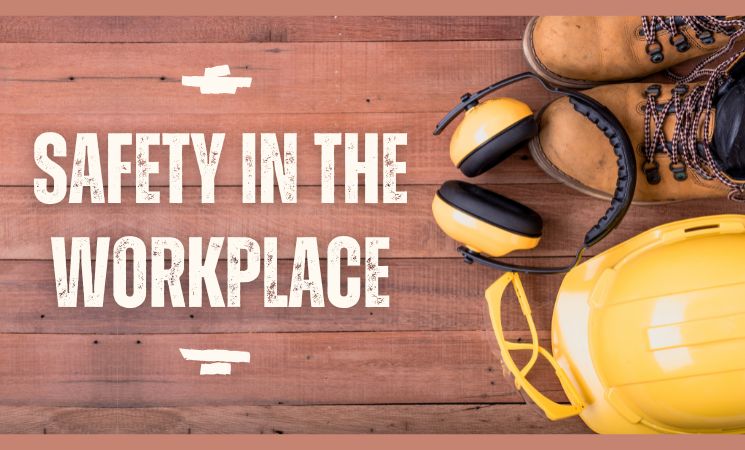In the realm of workplace safety, one cannot understate the pivotal role played by safety signs in Australia. These visual communication tools are instrumental in preventing injuries and ensuring a safe working environment. Effective signage acts as a constant reminder of the risks present and the necessary precautions workers must take. The significance of proper signage is emphasised through regulations and standards across the nation, affirming the obligation of employers to provide a secure work setting.
The Legal Framework and Standards for Safety Signage
The legal fabric binding safety signage in Australia is intricate and well-defined. National standards, tailored to maintain high safety levels, command strict adherence. This framework encapsulates myriad regulations that span various industries, highlighting the collective responsibility to thwart workplace mishaps. It is pivotal that businesses stay abreast with these requirements to ensure compliance and, more importantly, to protect their workforce.
Universal Comprehension through Design and Colour Coding
The effectiveness of safety signage hinges on universal comprehension, which is achieved through considered design and colour coding. Colours function as the silent sentinels of information, communicating hazard levels and appropriate behaviour within seconds. The design element transcends language barriers and educates a diverse audience, encapsulating instructions, warnings, and mandatory actions coherently and unequivocally.
Types of Safety Signs and Their Functions
Delving into the types of safety signs, one identifies several categories, each with a unique purpose. These range from prohibitory and mandatory signs to warning and emergency information signs. Each category employs a specific colour scheme and symbols to effectively discharge its designated role, guiding behaviour and response in the workplace.
Proactive Risk Management through Signage Strategy
Instituting a robust signage strategy is fundamental to proactive risk management. It involves analysing potential hazards, deciding the appropriate type of sign, and strategically placing it to maximise visibility and impact. This forward-thinking approach is centred on preempting incidents and ingraining safety as a core workplace ethos.
Training Employees to Understand and Heed Signage
Employees form the cornerstone of any effective safety strategy, which is why training them to understand and heed signage is of utmost importance. Comprehensive safety education notifies staff about the nuances of deciphering signs and the significance of adherence, essentially empowering them to be active participants in maintaining safety standards.
Durability and Maintenance of Safety Signage
The duty of maintaining signage is just as critical as its initial installation. Over time, wear and tear can detract from the sign’s visibility and its capacity to convey critical safety information. Regular inspections and attending to signage maintenance are necessary to preserve their integrity and functionality.
Innovation and Technology in Safety Signage
Advancements in technology have introduced a new epoch of innovation in the arena of safety signage. Smart signs that incorporate digital displays and interactivity provide real-time safety updates and can swiftly adapt to changing environments, thereby augmenting the conventional static signs. This technological revolution promises to bolster workplace safety and responsiveness.
The Role of Safety Signage in Emergency Evacuation
In the event of an emergency, clear and visible signage becomes even more critical. Emergency evacuation signs guide individuals swiftly and safely to exit points, substantially reducing the scope for confusion and panic. It is in these moments that the value of well-positioned, luminous signage is most palpable.
Customisation of Safety Signage for Industry-Specific Needs
Given the diversity of working environments, the customisation of safety signage to meet industry-specific needs is essential. Tailored signs that reflect certain hazards or instructions peculiar to an industry can significantly enhance safety by addressing unique risk factors pertinent to that field.
Compliance Auditing for Safety Signage
Compliance auditing is a salient step in validating the effectiveness of safety signage within a workplace. These audits assess alignment with legal standards and the signs’ condition and placement, ensuring that they serve their intended purpose effectively without any compliance gap.
Accessibility and Inclusion in Safety Signage
A workplace should be inclusive, ensuring that safety signs are designed to be accessible to all individuals, regardless of any disabilities. This ethos of inclusion embodies the principle that workplace safety is a universal right, transcending physical or sensory limitations.
Ensuring Visibility and Comprehension in Outdoor Work Environments
Outdoor work environments pose additional challenges for ensuring that safety signs remain highly visible and comprehendible. Factors like lighting, weather, and distance must be taken into account to uphold the integrity of the safety messages they convey.
Conclusion
The strategic use of safety signs is fundamental in fostering a culture of vigilance and safety in the Australian workplace. It is not merely about compliance but about the commitment to safeguarding lives—the core of any business’s ethical responsibility. Therefore, the importance of proper signage cannot be overstated, and vigilance in this aspect is indispensable. Thus, safety signs in Australia are a linchpin in the safety and well-being of the workforce. They must be selected, maintained, and adhered to with diligence and the highest regard for the message they carry and the lives they protect.












